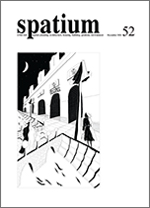Development and validation of the Housing Environmental Quality Assessment Tool (HEQAT) for children with ADHD using the Delphi process
DOI:
https://doi.org/10.2298/SPAT220923013AKeywords:
attention-deficit/hyperactivity disorder, post-occupancy evaluation, expert panel and stakeholders, indoor environmental quality, Content Validity IndexAbstract
This study aimed to establish a valid and purposeful evaluation tool for building professionals and designers to identify housing features that adversely impact children and adolescents with attention-deficit/hyperactivity disorder (ADHD). After a review of pre-existing tools, it was found that such a tool does not yet exist but is necessary for modifying, designing, and constructing residential environments of the future. Most environmental quality checklists or housing quality assessment tools lack specificity, development, and documentation of operational definitions. Therefore, we developed the Housing Environmental Quality Assessment Tool (HEQAT) based on pre-existing building tools in combination with identified aspects of environmental features associated with mental health and ADHD extracted from the literature. Using the Delphi process, we modified the tool based on the opinions of four groups of experts and stakeholders to establish the tool’s validity. The content validity index (CVI) was used to establish the overall content validity of the assessment tool. Of the tool’s 74 items reviewed and rated by a team of experts and stakeholders
over a 2-round Delphi process, 70 items were judged to be relevant, with a CVI of greater than 0.78. Consequently, the tool’s overall content validity was calculated as 95 per cent. The data obtained using this tool could contribute to the knowledge of how residential buildings can be designed and built to be suitable for individuals diagnosed with ADHD.


